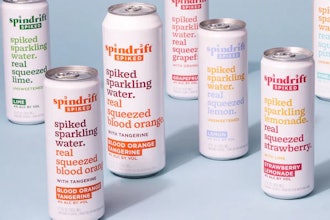
MILAN (AP) — When it comes to skyrocketing pasta prices, Italians are crying: Basta!
They have had enough after the cost of the staple of every Italian table soared by twice the rate of inflation. One consumer advocate group is calling for a weeklong national pasta strike starting June 22 after the Rome government held a crisis meeting last month and decided not to intervene on prices.
"The macaroni strike is to see if keeping pasta on the shelves will bring down the prices, in the great Anglo-Saxon tradition of boycotting goods," said Furio Truzzi, president of the group, Assoutenti. "The price of pasta is absolutely out of proportion with production costs."
Grocery prices have risen more sharply in Europe than in other advanced economies — from the U.S. to Japan — driven by higher energy and labor costs and the impact of Russia's war in Ukraine. That is even though costs for food commodities have fallen for months from record highs, including wheat for the flour used to make pasta.
Stores and suppliers have been accused of profit-padding "greedflation," but economists say retail profits have been stable and the problem comes down to the higher cost to produce food.
Feeling the pressure, some governments in Europe have capped prices on staples or pushed for agreements with grocery stores to bring down costs, something that's popular with the public but can actually make food prices worse.
Shoppers like Noée Borey, a 26-year-old picking up groceries at a chain store in Paris, said she is all for setting ceilings for some food to help low-income workers and students.
She buys less meat and opts for less expensive grocery stores.
"Inevitably, all the products I buy have gone up by 20%, whether it's butter or berries," Borey said. "I'm not buying cherries anymore because they cost 15 euros a kilo" (about $8 a pound).
The French government reached a three-month agreement with supermarket chains for them to cut prices on hundreds of staples and other foods, which is expected to be extended through the summer. Britain — where food inflation has reached 45-year highs — is discussing a similar move.
Countries like Hungary, with the highest food inflation in the European Union, and Croatia have mandated price controls for items like cooking oil, some pork cuts, wheat flour and milk.
The Italian government says it will strengthen price monitoring by working more closely with the country's 20 regions but won't impose such limits.
Spain has avoided price controls but abolished all value-added tax on essential products and halved tax on cooking oil and pasta to 5%.
The measures come as food banks are seeing soaring demand in some countries.
"Things are not getting better, they are getting worse for people," said Helen Barnard of the Trussell Trust, a charity that operates more than half of the food banks in the United Kingdom.
Spending much more to buy essentials like milk, pasta and fresh vegetables to "top up" donations received from supermarkets is a struggle for Anna Sjovorr-Packham, who runs several community food pantries serving discounted groceries to some 250 families in south London.
"While the demand from families hasn't gone up hugely, the cost has, and that's been really difficult to support," she said.
Prices for food and non-alcoholic drinks have actually fallen in Europe, from 17.5% in the 20-country euro area in March to a still-painful 15% in April. It comes as energy prices — key to growing and transporting what we eat — have dropped from record highs last year. But economists say it will be many months before prices in stores settle back down.
In comparison, U.S. food prices rose 7.7% in April from a year earlier, 8.2% in Japan and 9.1% in Canada. They hit 19% in the U.K.
The numbers play into expectations that the European Central Bank will raise interest rates again this week to counter inflation, while the U.S. Federal Reserve is expected to skip a hike.
In Europe, turning to price controls plays to voters, who get constant reminders of the inflation every time they hit the checkout counter, said Neil Shearing, group chief economist for Capital Economics. But he said such changes should be reserved for instances of supply shocks, like war.
Such controls could actually make food inflation worse by increasing demand from shoppers but discouraging new supply, he said.
"The current food price shock does not warrant such intervention," Shearing said.
While pasta remains one of the most affordable items in many grocery baskets, the symbolism hits the Italian psyche hard and comes as families are absorbing higher prices across the board, from sugar to rice, olive oil and potatoes.
Italian families of four are spending an average of 915 euros ($984) more a year on groceries, an increase of nearly 12%, for a total of 7,690 euros a year, according to Assoutenti. A full one-third of Italians have reduced grocery store spending, according to SWG pollsters, and nearly half are shopping at discount stores.
But even discounts are not what they used to be, and it's toughest for pensioners.
"Before, you could get two packs (of pasta) for 1 euro," said Carlo Compellini, a retiree who was shopping in central Rome. "Now with 2 euros, you get three packs."
Inflation is putting little indulgences out of reach for many, creating a new divide between the haves and have-nots.
The recent opening of a Sacher Café in Trieste, an Italian city whose Austro-Hungarian roots are evident in its stately architecture, led the mayor to a much-ridiculed response recalling for many an out-of-touch remark attributed to Marie Antoinette.
Asked about complaints that a slice of the famed Viennese chocolate cake was too pricey at nearly 10 euros, Mayor Roberto Dipiazza responded, "If you have money, go. If you don't, watch."






















